The best reasons to study it are in physics. It might interest you what the Russian mathematician V.I.Arnold has to say: “Mathematics is a part of physics.”. But if you need motives that are simple and easy to understand, think of measuring the arcs of curves and areas contained between them.
Let me recall that “parabola” meant just parabola to Archimedesa (choose a line in the plane and then a point outside the line; give the name of parabola to the set of those points of the plane that have the same distance from both chosen objects) and not a “graph of a second degree equation”. The last expression would not make sense to him (a link between geometrical objects and algebraic description appeared 1900 years later). And it does not make sense today, although it is frequently used by teachers who do not really care about their students. And it should be so obvious: if someone asks: “who was Newton?”, can we accept the answer: “he was the man whose first name is spelled i-s-double a-c”?.
When you get the diploma of high school probably you do not expect to see any more parabolas cutting the axes x and y, but the meeting of two parabolas will bring nicer impression:
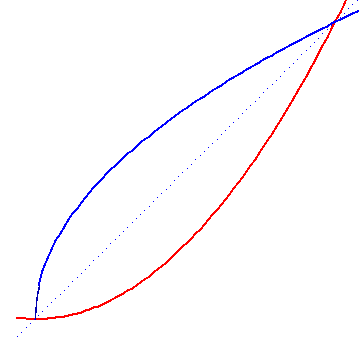
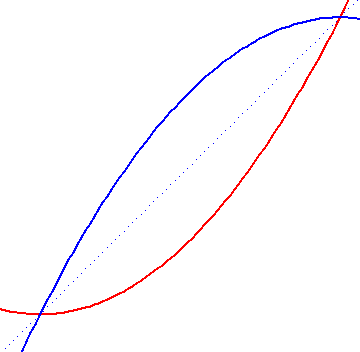
If the coordinates are chosen so that the curves of the first sketch
are described by equations
But the challenge to find the area between the curves either turns
one back to cumbersome techniques from the antiquity or it calls
for the application of integral calculus. And it comes as a nice
surprise that all the three figures in this square
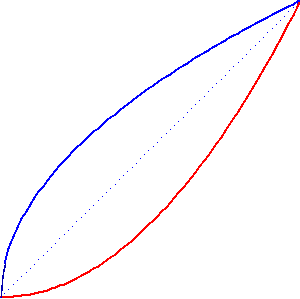

High school knowledge suffices to find coordinates of four meeting points of the curves.
Two of them: (-1,0) and (0,-1)
are obvious enough. Still, two other ones are expressed by the
number  (golden mean!)
and its inverse; a nice encounter. Besides, the length of the
segment contained in the symmetry axis is the square root of 10,
the number giving an excellent approximation (with error smaller
than 1%) of another famous number, stemming out from a very
different figure, the number
(golden mean!)
and its inverse; a nice encounter. Besides, the length of the
segment contained in the symmetry axis is the square root of 10,
the number giving an excellent approximation (with error smaller
than 1%) of another famous number, stemming out from a very
different figure, the number  .
.
Elementary considerations show that the four points lie on the
circle that circunscribes the leaf. The equation of the
circle is
It is equally simple to find out that the circle with equation
is inscribed in the leaf (touches all its four borders). The distance of the latter circle to the closer of its two “sharp” points is

– it can be substituted by rational number 5-3 commiting an error smaller than 10-5 .
The number is so small that – making the design of correct proportions – we could visualize it only if the sketch were spread out on a table. The alternative is an approach of an artist who stresses the essential and manages to deform and make inconspicuous the rest. Luck has it that a friend of mine, Jurek Kocik, is a mathematician as well as an artist and has a knack for performing such tricks. That is how he rendered it (and I render him my hommage because I would not know to produce such a simple design):

So, we have many nice results at a low calculational expense – but it does not seem easy to discover without integral calculus that the leaf measures 11/3.
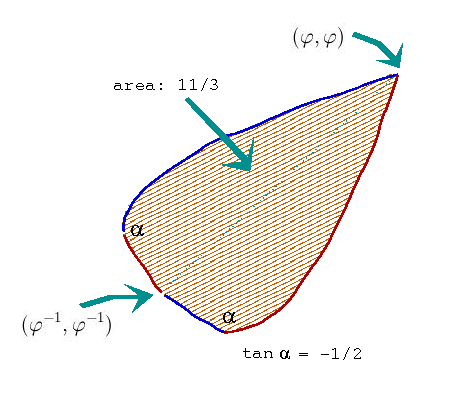

The “common sense” should help to find good line of arguments. But it will not suffice to show tha the area measures 4/3. In order to get the result one has to use the integral calculus – on of the simplest possible applications of that powerful tool.
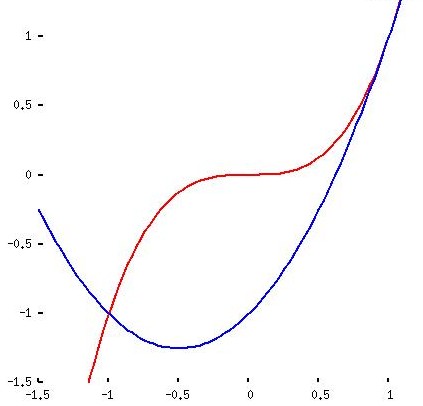 |
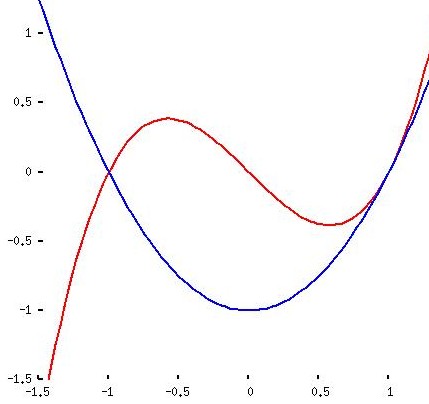 |
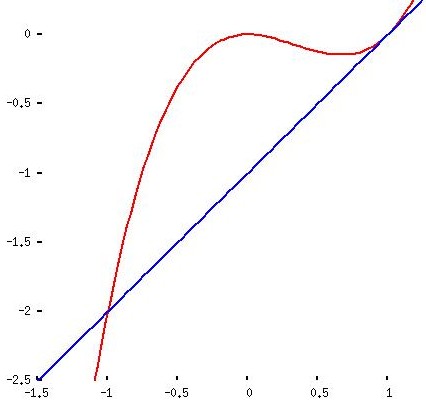 |
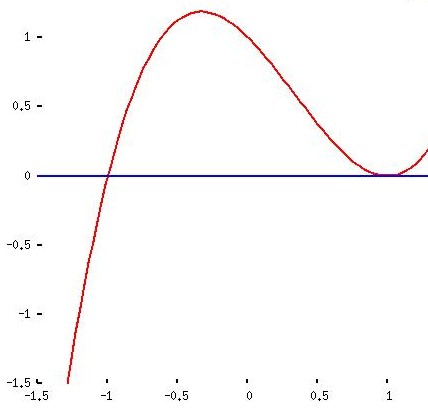 |
|
y1 = x3 y2 = x2 + x - 1 |
y1 = x3 - x y2 = x2 - 1 |
|
y1 = x3 - x2 y2 = x - 1 |
y1 = x3 - x2 - x + 1
y2 = 0 |
The said “common sense” (that is: the capacity to apply high school knowledge when solving polynomial equations) is enough to show that the all the pairs of curves meet at horizontal coordinates -1 and 1. But you need th differential calculus to find out that the highest point in the fourth sketch has coordinates (-1/3 , 32/27). This information (sketch a triangle with this vertex and two meeting points mentioned before) leads to conclusion that the number 32/27 gives the area of the triangle and you may visually estimate the size of error when the triangle substitutes the figure.
Here you can take the closer look at the graphs of the functions.